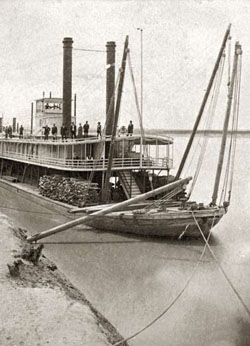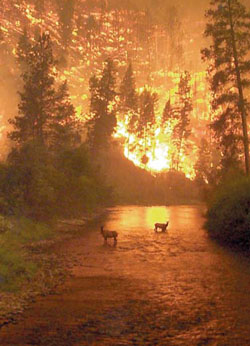Montana: Stories of the Land
Companion Website and Online Teacher's Guide
Chapter 12 - Logging in the "High Lonesome," 1862-1949
Chapter 1 - Montana: Where the Land Writes History
Chapter 2 - People of the Dog Days
Chapter 3 - From Dog Days to Horse Warriors
Chapter 4 - Newcomers Explore the Region
Chapter 5 - Beaver, Bison, and Black Robes
Chapter 6 - Montana's Gold and Silver Boom
Chapter 7 - Two Worlds Collide
Chapter 8 - Livestock and the Open Range
Chapter 9 - Railroads Link Montana to the Nation
Chapter 10 - Politics and the Copper Kings
Chapter 11 - The Early Reservation Years
Chapter 12 - Logging in the "High Lonesome"
Chapter 13 - Homesteading This Dry Land
Chapter 14 - Towns Have Lives, Too
Chapter 15 - Progressive Montana
Chapter 16 - Montana and World War I
Chapter 17 - Montanans on the Move
Chapter 18 - The Great Depression Transforms Montana
Chapter 19 - World War II in Montana
Chapter 20 - Building a New Montana
Chapter 21 - A People's Constitution
Chapter 22 - Living in a New Montana
Educator Resources
Takeaways
-
Inspired by reading specialist Tammy Elser, who was in turn inspired by SKC graduate Taylor Crawford, we've created a "Takeaway" bookmark for every chapter of Montana: Stories of the Land. Before starting a chapter, print and cut out these bookmarks and distribute them to your students. Ask them to use the Takeaway to summarize the GIST of what they learn from reading assigned sections of the chapter. Remind them that they don't have much room, so they'll need to think before they write down the most important idea they want to take away from the section. Learn a little more about the GIST strategy.
-
Even though we've created Takeaways for every chapter, we don't recommend you have your students complete a Takeaway for every section of every chapter they read. That would be exceedingly tedious. However, used appropriately, they can be a useful tool for encouraging reflection and teaching students how to summarize information.
Websites and Online Lesson Plans
-
The Annotated Resource Set Logging the "High Lonesome," 1862-1949, includes links to photographs, maps, illustrations, and documents relating to Montana’s timber history. Many, but not all, of the images were also used to illustrate Chapter 12 of Montana: Stories of the Land. These sources can be used to build PowerPoints or to create DBQs or other primary-source based activities.
-
Tales of the 1910 Fire is an exhibit, including a first-hand account of the fires by a forest ranger, created by Archives & Special Collections, Maureen and Mike Mansfield Library.
-
The Confederated Salish and Kootenai Tribes' "Fire on the Land" website is a great resource in itself and includes links to many additional resources.
-
The U.S. Forest Service has created a series of lesson plans to complement The Greatest Good: A Forest Service Centennial Film. Many of the lesson plans can be used without watching the film.
-
PBS created a companion website for NOVA's Fire Wars with resources and a teacher's guide.
-
The National Museum of Forest Service History has virtual exhibits, lesson plans, and digitized collections.
-
The Forest History Society offers both primary and secondary source information on the history of the U.S. Forest Service in a well organized, easily navigable site.
-
The US Forest Service has gathered information on the history of smoke jumping.
-
The Great 1910 fire website has transcribed newspaper articles, lists of fire victims and photographs.
-
Logging History in Montana. Teacher Dave Pickering created this classroom tool on the history of logging. It has a series of themed questions, and links to hundreds of photos on the Montana History Portal that go back to the earliest days of logging in Montana.
Videos or DVDs
-
The Greatest Good: A Forest Service Centennial Film - 2 hours. Available for purchase via an internet search.
-
Yellowstone Aflame: Fires of '88, 1989 - 53 minutes. Available for purchase via an internet search.
Possible Field Trips: View the Map
-
Gates of the Mountains Boat Tour, near Helena (this will take you by the site of the Mann Gulch fire)
-
Smokejumper Visitor Center, Missoula
-
Sliderock Lookout at the Historical Museum at Fort Missoula
Chapter 12 Test and Answer Keys Page
The tests and answer keys are password protected.
You can contact us to receive the password:
- Martha Kohl - call (406) 444-4790 or email mkohl@mt.gov
- Melissa Hibbard - call (406) 444-4741 or email Melissa.Hibbard@mt.gov
Or, if you used the old system, the original username is now the new password. You will be asked for this case-sensitive password every time you open a new document.
Alignment to ELA Common Core Standards
Alignment to Content Standards and Essential Understandings Regarding Montana Indians (EU)


